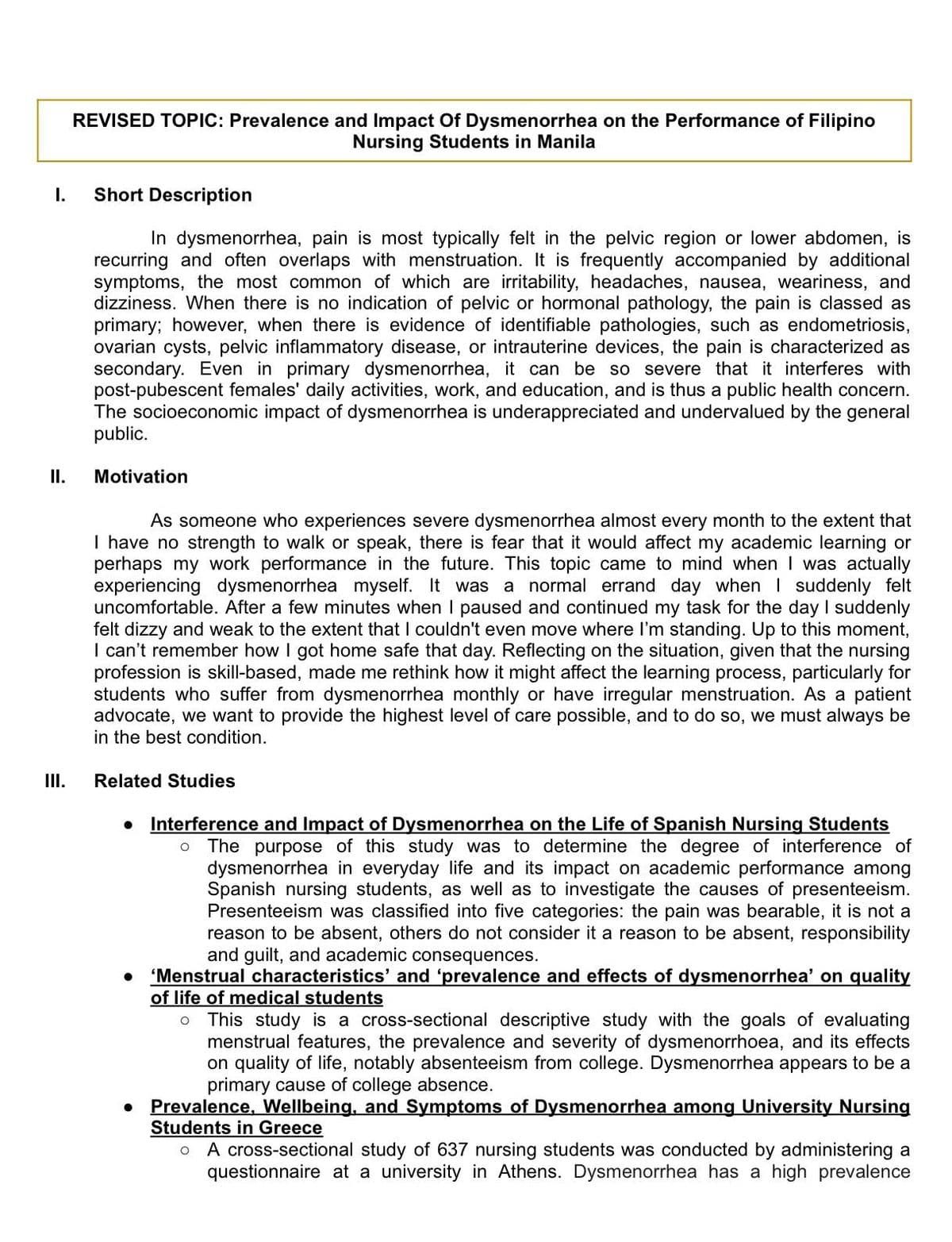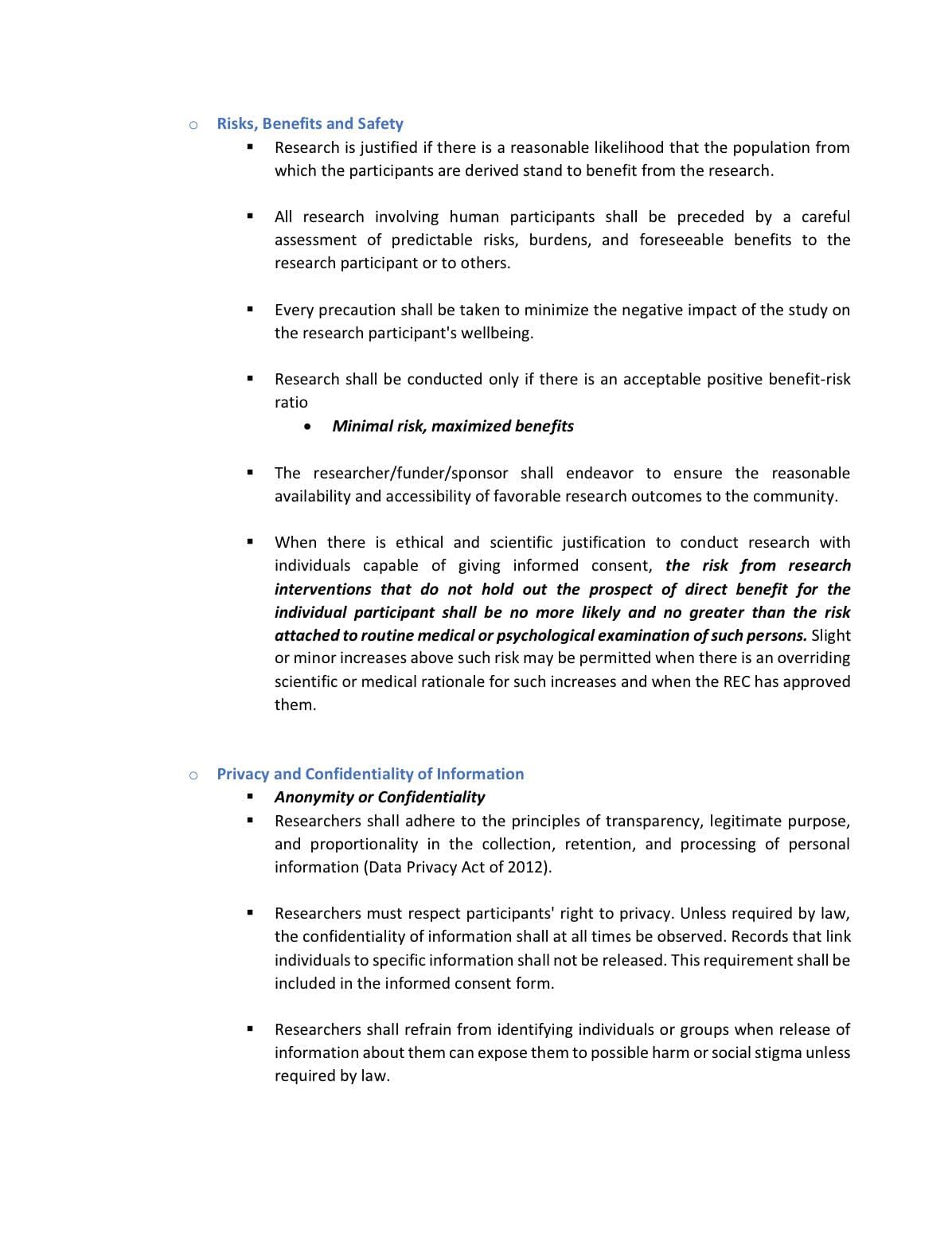based from the topic, kindly lists the a.) risks, benefits and safety b.) privacy and confidentiality of information 2nd page are the guidelines
based from the topic, kindly lists the a.) risks, benefits and safety b.) privacy and confidentiality of information 2nd page are the guidelines
Surgical Tech For Surgical Tech Pos Care
5th Edition
ISBN:9781337648868
Author:Association
Publisher:Association
Chapter7: Preventing Perioperative Disease Transmission
Section: Chapter Questions
Problem 7.2.1CS
Related questions
Question
based from the topic, kindly lists the
a.) risks, benefits and safety
b.) privacy and confidentiality of information
2nd page are the guidelines

Transcribed Image Text:REVISED TOPIC: Prevalence and Impact Of Dysmenorrhea on the Performance of Filipino
Nursing Students in Manila
I.
Short Description
In dysmenorrhea, pain is most typically felt in the pelvic region or lower abdomen, is
recurring and often overlaps with menstruation. It is frequently accompanied by additional
symptoms, the most common of which are irritability, headaches, nausea, weariness, and
dizziness. When there is no indication of pelvic or hormonal pathology, the pain is classed as
primary; however, when there is evidence of identifiable pathologies, such as endometriosis,
ovarian cysts, pelvic inflammatory disease, or intrauterine devices, the pain is characterized as
secondary. Even in primary dysmenorrhea, it can be so severe that it interferes with
post-pubescent females' daily activities, work, and education, and is thus a public health concern.
The socioeconomic impact of dysmenorrhea is underappreciated and undervalued by the general
public.
I.
Motivation
As someone who experiences severe dysmenorrhea almost every month to the extent that
I have no strength to walk or speak, there is fear that it would affect my academic learning or
perhaps my work performance in the future. This topic came to mind when I was actually
experiencing dysmenorrhea myself. It was
uncomfortable. After a few minutes when I paused and continued my task for the day I suddenly
felt dizzy and weak to the extent that I couldn't even move where l'm standing. Up to this moment,
I can't remember how I got home safe that day. Reflecting on the situation, given that the nursing
profession is skill-based, made me rethink how it might affect the learning process, particularly for
students who suffer from dysmenorrhea monthly or have irregular menstruation. As a patient
advocate, we want to provide the highest level of care possible, and to do so, we must always be
in the best condition.
a normal errand day when I suddenly felt
II.
Related Studies
Interference and Impact of Dysmenorrhea on the Life of Spanish Nursing Students
The purpose of this study was to determine the degree of interference of
dysmenorrhea in everyday life and its impact on academic performance among
Spanish nursing students, as well as to investigate the causes of presenteeism.
Presenteeism was classified into five categories: the pain was bearable, it is not a
reason to be absent, others do not consider it a reason to be absent, responsibility
and guilt, and academic consequences.
'Menstrual characteristics' and 'prevalence and effects of dysmenorrhea' on quality
of life of medical students
This study is a cross-sectional descriptive study with the goals of evaluating
menstrual features, the prevalence and severity of dysmenorrhoea, and its effects
on quality of life, notably absenteeism from college. Dysmenorrhea appears to be a
primary cause of college absence.
Prevalence, Wellbeing, and Symptoms of Dysmenorrhea among University Nursing
Students in Greece
o A cross-sectional study of 637 nursing students was conducted by administering a
questionnaire at a university in Athens. Dysmenorrhea has a high prevalence

Transcribed Image Text:Risks, Benefits and Safety
Research is justified if there is a reasonable likelihood that the population from
which the participants are derived stand to benefit from the research.
All research involving human participants shall be preceded by a careful
assessment of predictable risks, burdens, and foreseeable benefits to the
research participant or to others.
Every precaution shall be taken to minimize the negative impact of the study on
the research participant's wellbeing.
Research shall be conducted only if there is an acceptable positive benefit-risk
ratio
Minimal risk, maximized benefits
The researcher/funder/sponsor shall endeavor to ensure the reasonable
availability and accessibility of favorable research outcomes to the community.
When there is ethical and scientific justification to conduct research with
individuals capable of giving informed consent, the risk from research
interventions that do not hold out the prospect of direct benefit for the
individual participant shall be no more likely and no greater than the risk
attached to routine medical or psychological examination of such persons. Slight
or minor increases above such risk may be permitted when there is an overriding
scientific or medical rationale for such increases and when the REC has approved
them.
Privacy and Confidentiality of Information
Anonymity or Confidentiality
Researchers shall adhere to the principles of transparency, legitimate purpose,
and proportionality in the collection, retention, and processing of personal
information (Data Privacy Act of 2012).
Researchers must respect participants' right to privacy. Unless required by law,
the confidentiality of information shall at all times be observed. Records that link
individuals to specific information shall not be released. This requirement shall be
included in the informed consent form.
Researchers shall refrain from identifying individuals or groups when release of
information about them can expose them to possible harm or social stigma unless
required by law.
Expert Solution
This question has been solved!
Explore an expertly crafted, step-by-step solution for a thorough understanding of key concepts.
Step by step
Solved in 3 steps

Recommended textbooks for you

Surgical Tech For Surgical Tech Pos Care
Health & Nutrition
ISBN:
9781337648868
Author:
Association
Publisher:
Cengage


Surgical Tech For Surgical Tech Pos Care
Health & Nutrition
ISBN:
9781337648868
Author:
Association
Publisher:
Cengage
